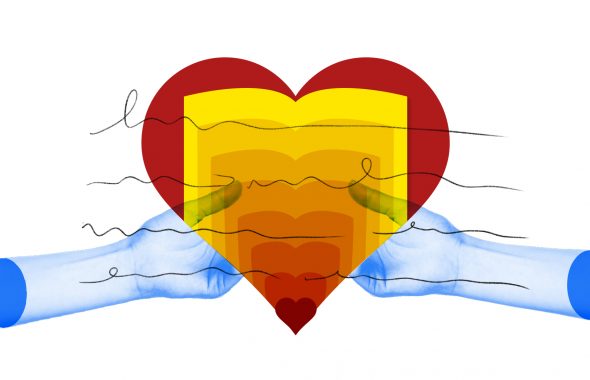As anyone who is familiar with Christian holidays knows, winter is jam-packed with important observances. Christmas is well known, but there are many occasions with great religious significance leading up to spring that are less familiar to many: Shrove Tuesday, Mardi Gras, Ash Wednesday, and Lent.
In the simplest sense, all of these days are lead-ins to the central Christian festival of Easter. Some are joyous and full of revelry, while others are more reserved and describe a time of penitence and fasting. But all of them have names just as meaningful as the traditions they represent, and this is the perfect occasion to learn more about this time of year.
What is Shrove Tuesday?
Shrove Tuesday is one of the three days that make up Shrovetide, which are the three days before Lent starts on Ash Wednesday. (More on these soon.) The other two days of Shrovetide follow a similar naming pattern: Shrove Sunday and Shrove Monday. Historically speaking, Shrovetide was when people made confessions to priests in preparation for Lent.
What is the meaning of the term Shrove Tuesday itself? The key component of the words Shrove Tuesday and Shrovetide—as well as the religious significance of the days themselves—is shrove. It’s the past tense of shrive, which means to go to a priest for confession for one’s sins. To be shrove means to be absolved of sin after confession. Shrive originally comes from the Latin word scrībere, the word for “to write” or “to draw” that’s also the base for words like subscription and transcribe.
Dig deeper into the word shrive and its connection with Shrove Tuesday, here.
How do people observe Shrove Tuesday?
Today, there’s not much writing or drawing going on around Shrove Tuesday. (No comment on how much confession is taking place, either.) The final day of Shrovetide in particular has become associated as a time when people indulge and partake in general merrymaking before settling down for the fasting and austerity of Lent.
Shrove Tuesday, in essence, became the day to do the things that one was historically forbidden by the church from doing for the 46 days of Lent: party and eat meat, eggs, and butter. Eating those foods to excess before Lent makes sense from a practical perspective since people need to use up those ingredients so they wouldn’t go bad during the month-and-a-half-long fast.
Home cooks and chefs alike know that there’s one food in particular that’s ideal for using up lots of eggs and butter: pancakes. The food has worked its way into the lore and language of Shrove Tuesday itself. In the UK and other parts of the world, Shrove Tuesday is known as Pancake Day or Pancake Tuesday. It’s also known as Mardi Gras—more on that later.
The exact day for celebration is rather mobile. Easter, after all, is considered a movable feast, which is a religious feast day that falls on a different calendar day each year. In 2024, Shrove Tuesday falls on February 13, and it lands on March 4 in 2025.
What is Mardi Gras?
The meaning of Mardi Gras comes from the French, and the name translates literally to “fat Tuesday.” Mardi means “Tuesday,” and Gras means “fat” and refers to the old tradition when people showed off a bœuf gras, or “fat ox,” during the holiday. It’s also a time to eat all of the meat and fatty foods before Lent starts.
Mardi Gras is another name for Shrove Tuesday, and it’s a day of general excess and merrymaking for the same reason: it’s the final day before Ash Wednesday and the start of Lent. You’ve also likely heard of carnival in relation to Mardi Gras, which comes from carnelevare, or “a removing of meat.” Venice is known for its carnival celebration, as is Rio de Janeiro, which hosts what is arguably the most famous of these festivities, with more than 2 million people attending to partake in parades, balls, and costumes.
Among the most famous Mardi Gras celebrations are those held in cities like New Orleans and Paris. It should be noted, however, that the party side of Mardi Gras has folded itself into the mainstream, and you’re just as likely to find people with various beliefs and religions celebrating as you are to find Christians and Catholics who adhere to Lent.
How do people celebrate Mardi Gras?
There are a number of Mardi Gras traditions to take part in. There would, of course, be no Fat Tuesday without plenty of food. Beignets, waffles, and crepes are typically served, as are king cakes—large green, gold, and purple circular cakes that have a plastic baby inside. A bean, gold coin, or other trinket used to be de rigueur when it came to hidden king cake treasures, but the little toy babies have become standard (which may be for the best, as plastic carries a lower risk of chipped teeth than a hard coin). Whoever gets the slice of cake with the baby is in charge of bringing the cake the following year.
Mardi Gras is also marked by parades, and people typically wear costumes and masks. In New Orleans, extravagant floats take to the streets and purple, green, and gold are the central colors of the occasion. Beads are often thrown from the floats to the crowds below. At night, there are the balls (most of them formal attire, and many invite-only) held by societies called krewes.
What is Ash Wednesday?
Ash Wednesday is the first day of Lent and the day after Shrove Tuesday (or Mardi Gras, depending on where you’re at). Ash Wednesday was first recorded in 1250—1300.
As with Shrove Tuesday, the meaning of the phrase Ash Wednesday is hidden within the name itself. Religious observers of Lent place ash, typically in the shape of a cross, on their forehead as a sign of penitence and a reminder of mortality. This marking is typically done by a priest at a mass or service. A quote from the Bible is often said with the application: “Dust thou art, and unto dust shalt thou return.”
Ash Wednesday is the hard line on the calendar between the excess of Mardi Gras or Shrove Tuesday and the start of Lent and fasting. Like all things associated with Lent, the day that Ash Wednesday falls on changes depending on when Easter is that year.
In 2024, Ash Wednesday is on February 14, and it’s on March 5 in 2025.
What is Lent?
While Shrove Tuesday and Mardi Gras get much of the attention, they’re really just a buildup to Lent, which, in turn, is all about Easter. Lent is the period of 40 weekdays (46 days total) of fasting and penitence starting on Ash Wednesday and ending on the Saturday before Easter (known as Holy Saturday). Roman Catholics, Anglicans, Methodists, and some other churches practice Lent, though some other Protestant Christian sects such as Baptists and most Evangelicals do not.
The time period of 40 days is a reference to the Bible and the story that Jesus spent 40 days fasting in the wilderness. The word itself, however, has a more earthly provenance. Lent was first recorded before the year 900, and it comes from the Old English word læncte, meaning “spring or springtime.” The literal meaning of Lent is a “lengthening (of daylight hours).” Interesting fact: one of the earliest and now obsolete meanings of quarantine in English (ultimately from the Latin word for forty) referred to the place in the wilderness where Jesus fasted for 40 days.
The timing of Easter, and therefore the timing of Lent, is based on the vernal equinox. Easter is always the Sunday after the first full moon. Since the last day of Lent is the day before Easter, the time period of Lent leads up to the longer days and shorter nights of spring.
Did we spring a new term on you? Learn more about what vernal equinox means, here.
One thing to note: Lent the holiday always starts with a capital, while lent with a lowercase is unrelated and is the past tense of lend, which means to let someone borrow something. Still, there is some giving up of material objects associated with capital-L Lent.
How do people observe Lent?
Traditionally, followers abstain from meat on Ash Wednesday and every Friday leading up to Good Friday, which is the Friday before Easter. Some people may fast entirely or eat only one meal without meat. Others practice other forms of self discipline and give up something they enjoy, like chocolate or social media. The act of “giving up” an indulgence is known as abstinence; its verb form is abstain, as in, I am abstaining from drinking soft drinks for Lent.
Lent’s home stretch is called Holy Week. It starts on Palm Sunday and ends a week later on Easter Sunday.
In 2024, Lent starts on February 14 and ends on March 28. Lent starts on March 5 in 2025 and ends on April 17.














